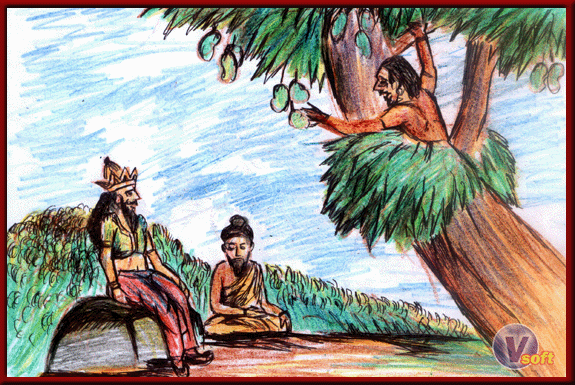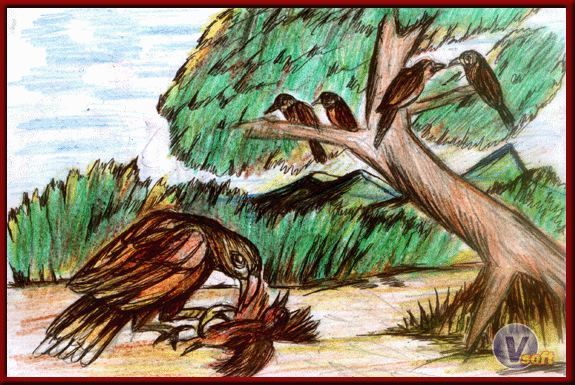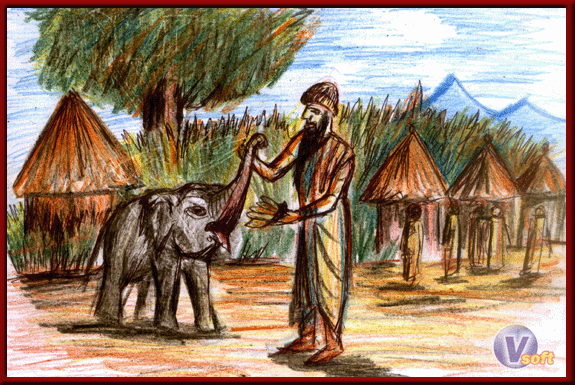265. The Bodhisatta As Carpenter’s Boar

Once upon a time, a carpenter, who dwelt in a village hard by the city gate of Benares, went into the forest to cut wood. He found a young Boar fallen into a pit, which he brought home and reared, naming him Carpenter’s Boar. The Boar became his servant; trees he turned over with his snout, and brought to him; he hitched the measuring-line around his tusk and pulled it along, fetched and carried adze, chisel, and mallet in his teeth.
264. The Bodhisatta As Candala

Once upon a time, when Brahmadatta was King of Benares, his chaplain’s family was destroyed by malarial fever. One son only broke through the wall and escaped. He came to Takkasila, and under a world-renowned teacher learnt all the arts and accomplishment then he bade his teacher farewell, and departed, with the intent to travel in different regions; and on his travels he arrived at a frontier village. Near to this was a great village of low-caste Candalas. Then the Bodhisatta abode in this village, a learned sage.
263. The Bodhisatta As A Wild Hen

Once upon a time there reigned in Kosamb a king named Kosambaka. At that time Bodhisatta became the offspring of a wild hen that dwelt in a grove of bamboo trees, and afterwards was the chief of a flock of several hundred fowls in the forest. Not far off lived a Falcon, which as he found opportunity caught the fowls one by one and ate them and in course of time he devoured all the others, and the Bodhisatta was left alone. But he used all caution. In seeking his food and dwelt in a thicket of bamboo. Here the Falcon could not get at him so he set about thinking by what trick he might entice him to capture.
262. The Bodhisatta As A White Elephant

Once upon a time, when Brahmadatta was king of Benares, there was a village of carpenters in which five hundred carpenters lived. They would go up the river in a vessel, and enter the forest, where they would shape beams and planks for housebuilding. These will be brought down to the river bank, and put them all aboard; then rowing down stream again, they would build houses to order as it was required of them; after which, when they received their wage, they went back again for more materials for the building, and in this way they made their livelihood.

